Are Badgers to Blame for Declining Hedgehogs?
Badgers are now subject to a controversial cull in an effort to halt the spread of bovine tuberculosis, with some arguing that the cull may benefit more than just ailing cattle.
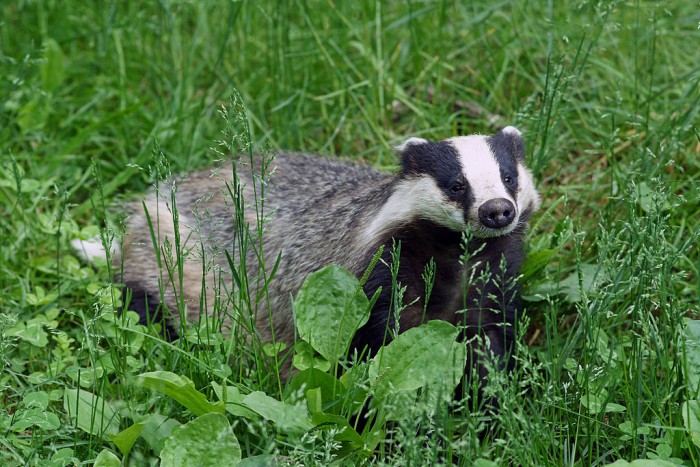 Image: By kallerna – Own work, CC BY-SA 3.0, https://commons.wikimedia.org/w/index.php?curid=20438654
Image: By kallerna – Own work, CC BY-SA 3.0, https://commons.wikimedia.org/w/index.php?curid=20438654 Two of Britain’s most adored mammals, the Badger (Meles meles) and Hedgehog (Erinaceus europaeus) are never far from the headlines in recent times, though for starkly contrasting reasons. Badgers it seems are public enemy number one, at least in the opinion of some. Indeed, following a dramatic population increase, Badgers are now subject to a controversial cull in an effort to halt the spread of bovine tuberculosis, with some arguing that the cull may benefit more than just ailing cattle.
Unlike the Badger, which has made the press due to an increase in numbers and the associated implications of such a rise, Hedgehogs have achieved coverage for an entirely different reason. Yes, whereas Badger numbers have risen in recent years, Hedgehogs have plummeted, their population crashing from an estimated 36 million in the 1950’s to less than one million today. The reasons for this seem clear; habitat loss, traffic collisions and farming practices often cited as possible catalysts. Some however have suggested a different explanation for this worrying trend; that Badgers may in fact be a driving factor in decline of the Hedgehog. This is a subject that has been touched on frequently in recent years, with many articles published on the matter including those here, here and here. Some, it seems, seek to justify the current Badger cull through its supposed benefits to our besieged Hedgehogs while others dispute this notion most virulently. Are Badgers really to blame for the decline of the Hedgehog in the UK? If not entirely, are they playing their part and as such, are culls justified?
Badgers eat Hedgehogs, that is a fact.
Whatever your thoughts on the matter, it is impossible to deny that Badgers are a natural predator of Hedgehogs. Though both Foxes (Vulpes vulpes) and Domestic Dogs have been shown to kill Hedgehogs, in Europe this species has only two main predators; the Eagle Owl (Bubo bubo) and the Badger. With Eagle Owls rare in the UK, the Badger is widely considered to be the main predator of Hedgehogs both in Britain and Northern Europe (Hubert et al, 2011). Indeed, most Badger dietary assessments from Europe, including that of Goszczynaski et al (2000) show Hedgehogs to feature in the diet of Badgers – though it should be stressed that nowhere, to the best of my knowledge, are Hedgehogs a dominant prey item; Earthworms, rodents, vegetable matter all taking precedence. Still, Hedgehogs are taken to a varying degree and Badger/Hedgehog depredation is by no means a rare occurrence.
Do Badgers impact upon Hedgehog populations?
Badgers do indeed have the potential to impact upon Hedgehog populations, particularly in rural areas (Hof & Bright, 2009). In Britain, where under the right circumstances, badger density can reach 30-40 individuals per square kilometer (Macdonald & Newman, 2002) it has been shown that Hedgehog abundance naturally varies in direct relation to the abundance of Badger setts (Michol et al, 1994). In addition to this, it has also been shown that female Hedgehogs tend to avoid areas with a heavy Badger presence (Dowding, Harris & Baker, 2010) while Doncaster (1992) concluded that Badgers impacted upon Hedgehog dispersal in their study of an introduced Hedgehog population. Finally, Hubert et al (2011) also observed reduced reproductive success in rural Hedgehogs hailing from areas with a comparably low Badger density – thus it stands to reason that in Britain, where Badgers are more numerous, such an effect could be amplified. It should also be noted however that some studies dispute the aforementioned findings, most notably a five year study by the University of Nottingham set up to examine the causes of Hedgehog deaths in a semi-rural environment. Here it was found that the majority of ‘Hogs died as a result of human activity, with traffic collisions accounting for 51% of fatalities. Indeed, only one Hedgehog was killed by Badgers..
In the UK , Hedgehogs have been shown to be more abundant in urban areas as opposed to rural settings, something that has been attributed to the lower abundance of Badgers in urban environments (Hof & Bright, 2009). Indeed, in Britain studies have shown rural Hedgehog numbers to stand somewhere in the region of 20-70 individuals per square km compared to upwards of 80 in urban areas (Doncaster, 1992; Morris, 1988; Reeve, 1994). With British cities still holding relatively few Badgers it stands to reason that Hedgehog declines in urban areas can be attributed to other factors such as the alteration of gardens and traffic collisions. It should be noted that urban badgers are however becoming more common, something which could lead to conflict further down the line with urban hedgehog populations already depleted due to the aforementioned factors.
In addition to direct depredation, Badgers may also impact upon Hedgehogs via direct competition for resources. Both species are indeed partial to Earthworms and a Badger may consume five times more in one sitting than a Hedgehog. This however is likely to only pose a problem in exceptional circumstances and thus does not warrant much concern.
Would a Badger cull help Hedgehogs?
Evidence from the initial pilot culls in 2014 has shown, that at some sites, Hedgehog numbers did increase following the removal of Badgers. Something that makes sense given the predator/prey relationship observed between the two species, and a fact that has lead to some advocating badger culls as a way of conserving Hedgehogs. Removing predators is a tried and tested way to conserve prey species and though many may not like it, increased control of Badgers likely would benefit Hedgehogs – Perhaps more so in rural areas given the findings of Hof & Bright (2009) etc.
Despite these results however many organisations including the British Hedgehog Preservation Society (BHPS) and the People’s Trust for Endangered Species (PTES) have voiced their concern over such a notion. In a joint statement, both organisations reiterated the need to combat the other factors attributing to Hedgehog declines, stressing a need to focus on the conservation of Hedgehogs in urban areas by creating hedgehog friendly towns and through the removal of barriers that prevent foraging. Both organisations stand fully opposed to the present badger cull, writing:
None of the scientific evidence supports the idea that culling badgers is an effective means of controlling bovine TB in the field. Recent pilot culls (2013, 2014) failed to kill sufficient animals for the cull to have been effective (despite extending the length of the trial) and raised doubts about the humaneness of the method. Given this, BHPS and People’s Trust for Endangered Species (PTES) join leading wildlife scientists in arguing against a cull of badgers to control bovine TB. Indeed, scientific evidence suggests that culling badgers may make the TB situation worse, a further reason why PTES/BHPS would not advocate culling badgers to benefit hedgehogs”.
Opinion
The Badger vs Hedgehog debate really is a tricky one, both species comprising iconic figments of the British landscape. At present I remain firmly on the fence in regards to the “cull or not to cull debate“. The present Badger cull does not sit well with me, not because of ethics – Indeed I freely support many species control schemes but simply due to the limited facts showing that culling makes any real difference to bovine TB levels. This said, Hedgehogs are likely to benefit from the control of badgers, as shown by the pilot culls thus I would find it hard to dispute such actions should further research be produced highlighting a negative relationship between the species. Like it or not, Badger culls are a reality at present and this provides the perfect opportunity for research into the relationship between the two species. With culls set to roll out across new areas, research into Hedgehog populations should surely follow. If widespread increases are noted, I may well have to re-evaluate my neutral stance. I do however find it important to combat the arguably more pressing issues associated with Hedgehog declines first, before pointing the finger at a natural predator.
Badgers and Hedgehogs have coexisted in harmony for millennia and it is only now, due to factors such as habitat loss and traffic, that they have come into conflict. These factors surely kill far more Hedgehogs each year than Badgers and are undoubtedly responsible for weakening populations to such an extent that depredation by a natural predator becomes a problem. While things are indeed being done to conserve Hedgehogs in urban areas, things look less promising in the countryside – Something that may lead to a ‘discussion’ about Badgers in the future. Until then however I look forward to seeing every option explored and hopefully, a conclusion reached that benefits both species.
If you wish to hear more from James, you can follow him on Twitter at @CommonByNature and follow his personal blog at; commonbynature.co.uk

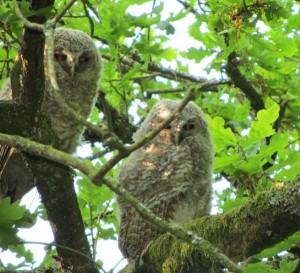
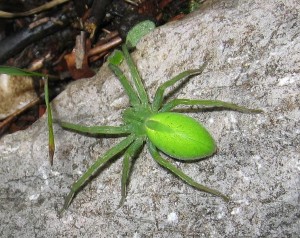
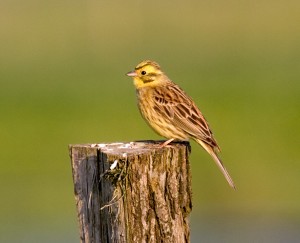
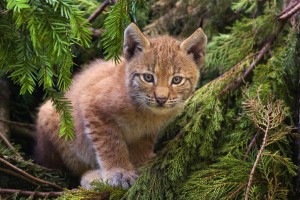
10 Comments
since badgers became a protected animal my land is now overrun with them prior to which they were a rare and pleasant sight.T he last hedgehog I saw was over 3 years ago and that was the skin only the rest having been badgered.If the badger population explosion continues hedghogs will join the dodo.
Robert – that’s a foolish comment. it was humans that upset the balance. Why shouldn’t badgers and all other animals be protected from us? Hedgehogs ARE not the preferred food source. Wildlife has survived for thousands of years before we came along… Impact of humanity has caused 96% of past extinctions – let’s not use badgers, foxes etc as scapegoats.!!!
Not a foolish comment at all! The semi-rural area around our very wild garden has not changed at all in the last 20yrs..We used to have lots of hedgehogs, but now we have badgers every night and a hedgehog perhaps once year. (we have eight cameras in the garden, so we know what goes on!)
I’ve got hedgehogs in my garden. But then I put food out for them. Why don’t you try it? They have evolved together for thousands of years but now you think that one is suddenly going to eat the other out of existence.
This is certainly an emotive subject! Where I live in West Devon, the usual reasons trotted out for hedgehog decline do not apply: the fields are all pasture, and the hedges are thick and numerous. Also, due to the narrow and twisting lanes, traffic speeds are low, as is the density.
Yet in over a decade of living here, I don’t remember when I last saw a squashed hedgehog: plenty of squashed and rotting brocks though…
Badgers everywhere here, not one hedgehog to be seen for a very long time. They are everywhere here & we’re in the middle of a large town. You’re tripping over badgers on the step at night.
A note of concern, rescues are “rescuing” hedgehogs & then putting the hedgehogs out on urban badger territories where there’s a food scarcity & where the hedgehogs magically disappear never to be seen again ever… Well, you can imagine, but of course we cannot accurately measure anything for sure.
Fattening the poor hedgehogs up for dinner & not for hibernation as intended.
I think the badger population may well need addressing. They are an apex predator & it’s not just hedgehogs, it’s bee nests they dig up, ground nesting birds, etc. Just my input on this site. In the middle of a town they forage, but there’s not really much here for them to eat except the hedgehogs, odd bits of rubbish & a few bugs. I tried feeding them outside, but it’s a big family group & they’re too expensive to feed.
Over the last 2 months we have had wildlife video footage and photos of a badger both in our garden and also on the Allotment which we back on to. The downside is that between the allotment, the next door neighbour and ourselves we have come across 3 dead hedgehogs. It can only be the badger as two of the carcasses were hollowed out. Is there anything we can do to deter the badger as we have seen no live hedgehogs since June 2021.
Since the growth in the badger population we have lost all our hedgehogs and our two pairs of barn owls we live on a farm with over two thousand meters of natural hedging. Are the two things related we think so are we animal and bird lovers yes.
I had a thriving group of healthy Hedgehogs in my garden and had been feeding them and providing nest boxes for hibernation etc. All was going well, and had done for several years, until a Badger managed to get into the garden and eat at least four of my little Hedgehogs, leaving just the one little one.
This happened in the early hours of Sunday between 03.00 to 03.30. I went through my security camera footage and saw the attack happen. It left me totally heartbroken.
I know there has been a lot of new housing built in the area and I am close to open countryside in Kettering, Northants. I can only guess that some Badger setts have been disturbed resulting in Badgers moving into urban areas, just like Foxes, and looking for easy meals.
Sadly found the skin and prickles of a hedgehog under our Mirabelle tree nothing else remained.
We had noticed it being around for the last few weeks young but growing.
Presumably eating fallen Mirabelle plums it had been killed by a badger, nothing else could have completely eviscerated the poor creature.
Badgers are a growing problem for other wildlife especially hedgehogs in the countryside and some form of control may be required.